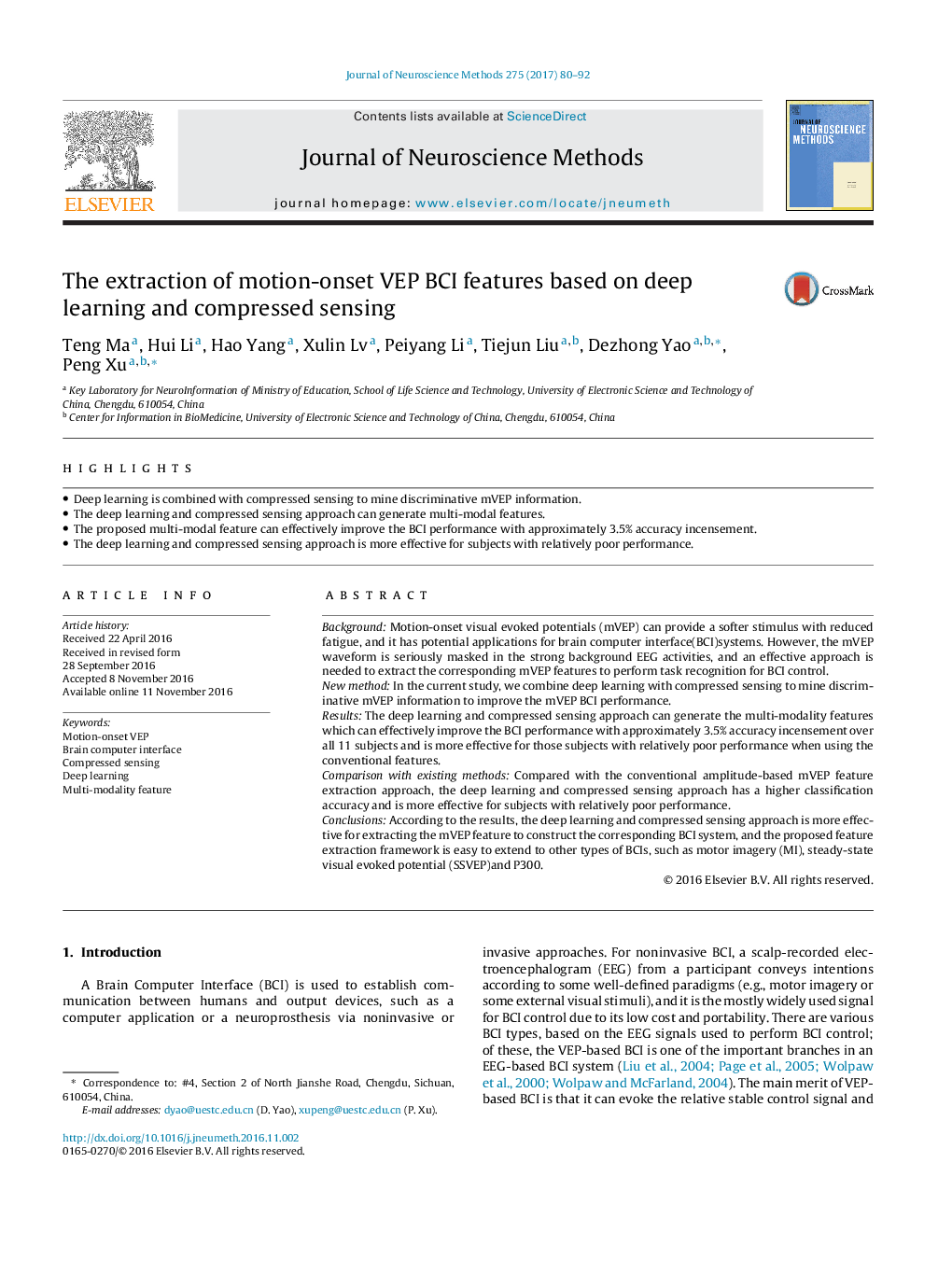| کد مقاله | کد نشریه | سال انتشار | مقاله انگلیسی | نسخه تمام متن |
|---|---|---|---|---|
| 5737285 | 1614594 | 2017 | 13 صفحه PDF | دانلود رایگان |

- Deep learning is combined with compressed sensing to mine discriminative mVEP information.
- The deep learning and compressed sensing approach can generate multi-modal features.
- The proposed multi-modal feature can effectively improve the BCI performance with approximately 3.5% accuracy incensement.
- The deep learning and compressed sensing approach is more effective for subjects with relatively poor performance.
BackgroundMotion-onset visual evoked potentials (mVEP) can provide a softer stimulus with reduced fatigue, and it has potential applications for brain computer interface(BCI)systems. However, the mVEP waveform is seriously masked in the strong background EEG activities, and an effective approach is needed to extract the corresponding mVEP features to perform task recognition for BCI control.New methodIn the current study, we combine deep learning with compressed sensing to mine discriminative mVEP information to improve the mVEP BCI performance.ResultsThe deep learning and compressed sensing approach can generate the multi-modality features which can effectively improve the BCI performance with approximately 3.5% accuracy incensement over all 11 subjects and is more effective for those subjects with relatively poor performance when using the conventional features.Comparison with existing methodsCompared with the conventional amplitude-based mVEP feature extraction approach, the deep learning and compressed sensing approach has a higher classification accuracy and is more effective for subjects with relatively poor performance.ConclusionsAccording to the results, the deep learning and compressed sensing approach is more effective for extracting the mVEP feature to construct the corresponding BCI system, and the proposed feature extraction framework is easy to extend to other types of BCIs, such as motor imagery (MI), steady-state visual evoked potential (SSVEP)and P300.
Journal: Journal of Neuroscience Methods - Volume 275, 1 January 2017, Pages 80-92